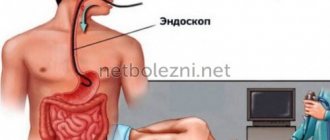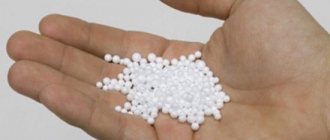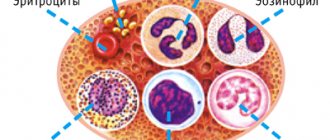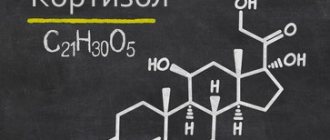special instructions
Use with caution in patients with UC, diverticulitis, recently created intestinal anastomosis, gastric and duodenal ulcers, renal failure, myasthenia gravis, arterial hypotension, diabetes mellitus, mental illness, hypoalbuminemia. With hypothyroidism, as well as with cirrhosis of the liver, the effect of cortisone may be enhanced. With initial emotional instability or psychotic tendencies, these phenomena may intensify. When using cortisone in patients with corneal herpes, the possibility of corneal perforation should be kept in mind. During treatment, it is necessary to monitor intraocular pressure and the condition of the cornea. With sudden discontinuation of treatment, especially in the case of previous use in high doses, the so-called GCS withdrawal syndrome occurs (not caused by hypocortisolism): anorexia, nausea, lethargy, generalized musculoskeletal pain, general weakness. After cortisone withdrawal, relative adrenal insufficiency may persist for several months. If stressful situations arise during this period, GCS is prescribed (according to indications), if necessary, in combination with mineralocorticoids. In children, during long-term treatment, careful monitoring of the dynamics of growth and development is necessary. Children who during treatment were in contact with patients with measles or chickenpox are prescribed specific immunoglobulins prophylactically.
Cortisone
The incidence and severity of side effects depend on the duration of use, the size of the dose used and the ability to comply with the circadian rhythm of the prescription.
From the endocrine system
: decreased glucose tolerance, “steroid” diabetes mellitus or manifestation of latent diabetes mellitus, suppression of adrenal function, Itsenko-Cushing syndrome (moon-shaped face, pituitary-type obesity, hirsutism, increased blood pressure, dysmenorrhea, amenorrhea, myasthenia gravis, stretch marks), delayed puberty development in children.
From the digestive system
: nausea, vomiting, pancreatitis, “steroid” gastric and duodenal ulcers, erosive esophagitis, bleeding and perforation of the gastrointestinal tract, increased or decreased appetite, flatulence, hiccups. In rare cases, increased activity of liver transaminases and alkaline phosphatase.
From the cardiovascular system
: arrhythmias, bradycardia (up to cardiac arrest); development (in predisposed patients) or increased severity of heart failure, ECG changes characteristic of hypokalemia, increased blood pressure, hypercoagulation, thrombosis. In patients with acute and subacute myocardial infarction, the necrosis focus spreads, the formation of scar tissue slows down, which can lead to rupture of the heart muscle.
From the nervous system
: delirium, disorientation, euphoria, hallucinations, manic-depressive psychosis, depression, paranoia, increased intracranial pressure, nervousness or anxiety, insomnia, dizziness, vertigo, pseudotumor of the cerebellum, headache, convulsions.
From the senses
: posterior subcapsular cataract, increased intraocular pressure with possible damage to the optic nerve, a tendency to develop secondary bacterial, fungal or viral eye infections, trophic changes in the cornea, exophthalmos.
Metabolism
: increased excretion of calcium ions, hypocalcemia, increased body weight, negative nitrogen balance (increased protein breakdown), increased sweating. Caused by mineralocorticoid activity: fluid and sodium ion retention (peripheral edema), hypernatremia, hypokalemic syndrome (hypokalemia, arrhythmia, myalgia or muscle spasm, unusual weakness and fatigue.
From the musculoskeletal system
: slower growth and ossification processes in children (premature closure of epiphyseal growth zones), osteoporosis (very rarely - pathological bone fractures, aseptic necrosis of the head of the humerus and femur), rupture of muscle tendons, “steroid” myopathy, decreased muscle mass (atrophy).
From the skin and mucous membranes
: delayed wound healing, petechiae, ecchymosis, skin thinning, hyper- or hypopigmentation, “steroid” acne, stretch marks, tendency to develop pyoderma and candidiasis.
Allergic reactions
: generalized (skin rash, itching, anaphylactic shock), local allergic reactions.
Others
: development or exacerbation of infections (the appearance of this side effect is facilitated by jointly used immunosuppressants and vaccination), leukocyturia, withdrawal syndrome.
Pharmacodynamics and pharmacokinetics
The hormone cortisone is present in the human and animal body; what it is and what processes it affects is important to know in order to understand the principle of action of the drug. Cortisone is a hormone of the adrenal cortex. It is a poorly soluble crystal that is secreted by the adrenal glands. The hormone cortisone stimulates the synthesis of carbohydrates and proteins and inhibits lymphoid organs. In industry, it can be obtained from steroids of animal and plant origin.
The drug Cortisone affects protein and carbohydrate metabolism in the body. It reduces the total level of protein in plasma, enhances the processes of protein breakdown in muscles and at the same time helps in its synthesis from breakdown products in the kidneys and liver. Thus, in some tissues the formation of proteins is inhibited, while in others, on the contrary, it is accelerated. This effect is realized through its influence on nucleic acids.
In addition, this remedy controls the process of breakdown of amino acids in the liver.
Reducing the activity of hexokinase is of great importance in its activity. It activates glucose-6-phosphatase and thereby increases the flow of glucose into the bloodstream, and also activates the synthesis of gluconeogenesis. This leads to an increase in the synthesis of carbohydrates from amino acids, which appear during the breakdown of proteins, a decrease in glucose tolerance, and an increase in glycogen levels in the liver and muscles.
Absorption of carbohydrates increases in the intestines, while their consumption by muscles decreases.
The medicine also promotes the breakdown of lymphoid tissue and inhibition of connective tissue synthesis. It prevents the manifestation of allergic reactions and blocks the synthesis of hyaluronidase.
The drug also affects lipid metabolism. It accelerates the synthesis of higher fatty acids, while preventing the mobilization of fat. In addition, it helps in sodium retention and increased potassium excretion.
Instructions for use Cortisone (tablets): description, composition, FTG, INN
The incidence and severity of side effects depend on the duration of use, the size of the dose used and the ability to comply with the circadian rhythm of the prescription.
From the endocrine system: decreased glucose tolerance, “steroid” diabetes mellitus or manifestation of latent diabetes mellitus, suppression of adrenal function, Itsenko-Cushing syndrome (moon face, pituitary type obesity, hirsutism, increased blood pressure, dysmenorrhea, amenorrhea, myasthenia, stretch marks ), delayed sexual development in children.
From the digestive system: nausea, vomiting, pancreatitis, “steroid” gastric and duodenal ulcers, erosive esophagitis, bleeding and perforation of the gastrointestinal tract, increased or decreased appetite, flatulence, hiccups. In rare cases, increased activity of liver transaminases and alkaline phosphatase.
From the cardiovascular system: arrhythmias, bradycardia (up to cardiac arrest); development (in predisposed patients) or increased severity of heart failure, ECG changes characteristic of hypokalemia, increased blood pressure, hypercoagulation, thrombosis. In patients with acute and subacute myocardial infarction - the spread of necrosis, slowing down the formation of scar tissue, which can lead to rupture of the heart muscle.
From the nervous system: delirium, disorientation, euphoria, hallucinations, manic-depressive psychosis, depression, paranoia, increased intracranial pressure, nervousness or anxiety, insomnia, dizziness, vertigo, pseudotumor of the cerebellum, headache, convulsions.
From the senses: posterior subcapsular cataract, increased intraocular pressure with possible damage to the optic nerve, a tendency to develop secondary bacterial, fungal or viral eye infections, trophic changes in the cornea, exophthalmos.
From the metabolic side: increased excretion of calcium ions, hypocalcemia, increased body weight, negative nitrogen balance (increased protein breakdown), increased sweating.
Caused by mineralocorticosteroid activity - fluid and sodium ion retention (peripheral edema), hypernatremia, hypokalemic syndrome (hypokalemia, arrhythmia, myalgia or muscle spasm, unusual weakness and fatigue).
From the musculoskeletal system: slower growth and ossification processes in children (premature closure of the epiphyseal growth zones), osteoporosis (very rarely - pathological bone fractures, aseptic necrosis of the head of the humerus and femur), rupture of muscle tendons, “steroid” myopathy, decreased muscle mass (atrophy).
From the skin and mucous membranes: delayed wound healing, petechiae, ecchymosis, thinning of the skin, hyper- or hypopigmentation, steroid acne, stretch marks, tendency to develop pyoderma and candidiasis.
Allergic reactions: generalized (skin rash, itching, anaphylactic shock), local allergic reactions.
Other: development or exacerbation of infections (the appearance of this side effect is facilitated by jointly used immunosuppressants and vaccination), leukocyturia, withdrawal syndrome.
Cortisol, cortisone, 6‑hydroxycortisol and their ratios in urine
Cortisol (hydrocortisone) is a steroid hormone belonging to the class of glucocorticoid hormones. Produced by the zona fasciculata of the adrenal cortex. The biological metabolite of cortisol is 6-β-hydroxycortisol, which is formed in the liver under the influence of the CYP3A4 isoenzyme, localized in the liver and in the cells of the small intestine. The main processes of biotransformation of xenobiotics, including drugs, occur in the liver with the participation of enzymes of the cytochrome P450 system, in particular the CYP3A4 isoenzyme. In clinical practice, the cortisol/cortisone ratio is used to indirectly assess the activity of the 11-hydroxysteroid dehydrogenase system (11α-HSD and 11β-HSD), and the 6-hydroxycortisol/cortisol ratio is used to determine the activity of the CYP3A4 isoenzyme. The determination of cortisol also has independent diagnostic value.
Defined parameters:
- Cortisol
- Cortisone (clinically significant in calculating the cortisol/cortisone ratio)
- 6-Hydroxycortisol
Ratios:
- Cortisol/cortisone
- 6-hydroxycortisol/cortisol
Research method
Gas chromatography-mass spectrometry (GC-MS).
Units
mcg/day (micrograms per day).
What biomaterial can be used for research?
Daily urine.
How to properly prepare for research?
- Avoid physical and emotional stress for 24 hours before the test.
- Avoid physical and emotional stress during the collection of daily urine (during the day).
General information about the study
Cortisol (hydrocortisone) is a steroid hormone belonging to the class of glucocorticoid hormones. Produced by the zona fasciculata of the adrenal cortex under the control of the hypothalamus and adrenocorticotropic hormone (ACTH), synthesized by the anterior pituitary gland. Cortisol stimulates proteolysis (the breakdown of proteins into amino acids) mainly in muscle tissue and activates gluconeogenesis in the liver (synthesis of glucose from amino acid residues).
Metabolism
The half-life of cortisol in the body is about 90 minutes. It is reversibly metabolized by the 11-hydroxysteroid dehydrogenase (11-HSD) system, which is represented by two enzymes: 11α-HSD catalyzes the conversion of cortisol to cortisone, and 11β-HSD back. Cortisone is the main metabolite of cortisol with weak glucocorticoid activity. The adrenal glands and kidneys are the main organs where cortisol inactivation occurs with the participation of 11α-HSD. Cortisone is also considered as a “temporary” depot for quickly replenishing the body’s needs for cortisol. The enzyme 11β-HSD converts inert cortisone back into biologically active cortisol. The maximum activity of 11β-HSD is observed in the liver and to a much lesser extent in adipose tissue, gonads, central nervous system and muscles. In obesity, insulin resistance, and metabolic syndrome, 11β-HSD activity in adipose tissue increases, which enhances the reconversion of cortisone to cortisol. Cortisol and cortisone are metabolized by 5β-reductase in the liver (to a lesser extent in the adrenal glands) into inactive tetrahydrocortisol and tetrahydrocortisone. The levels of cortisol and cortisone in the body depend on the activity of 5β-reductase. More than 95% of tetrahydroderivative metabolites of cortisol and cortisone form conjugates in the liver with glucuronic and sulfuric acid residues and are quickly excreted in the urine.
6-Hydrocortisol is formed from cortisol under the action of the CYP3A4 isoenzyme, localized in the endoplasmic reticulum of liver and intestinal cells. This isoenzyme, part of the cytochrome P450 system, is responsible for the metabolism of many substances of both endogenous origin (steroid hormones, lipids, bile acids) and xenobiotics, including drugs, environmental toxicants and natural compounds found in food. This isoenzyme is considered the main of all isoenzymes of the CYP family; it is found not only in the liver, but also in the prostate, mammary glands, epithelial cells of the small and large intestines, and even in brain cells. CYP3A4 metabolizes more than half of the drugs used today, including anticancer drugs, immunosuppressants, antifungals, macrolides, tricyclic antidepressants, etc. Since this isoenzyme contains a large number of substrates, changes in CYP3A4 activity often occur, caused by both drug-drug interactions and exposure xenobiotics from the environment and food (for example, natural compounds in grapefruit juice inhibit CYP3A4 activity).
Laboratory diagnostics
For diagnosis, the most informative method is the simultaneous determination of these steroids in 24-hour urine.
Determination of cortisol has independent diagnostic value.
Cortisone is an auxiliary analyte for laboratory diagnosis of adrenal pathology: for calculating the cortisol/cortisone ratio. In clinical practice, this ratio is used to indirectly assess the activity of 11α-HSD. Its increase is explained by decreased 11α-HSD activity, or increased 11β-HSD activity, or a combination of these two factors.
With a deficiency of 11β-HSD, the cortisone/cortisol ratio is greater than 1. In the absence of pathology, as a rule, it is 1:2 – 1:3. The actual reference values for cortisone in daily urine, which are given below, are approximate and their independent diagnostic value is low.
In clinical practice, the determination of the ratio of 6-hydroxycortisol and cortisol is used to determine the activity of the CYP3A4 isoenzyme, which, along with the conversion of cortisol to 6-hydroxycortisol, is involved in the metabolism of xenobiotics, including drug compounds. Tetrahydrocortisol and tetrahydrocortisone are the end products of the metabolism of cortisol and cortisone, and measuring their levels makes it possible to more accurately determine disturbances in the metabolism of this group of hormones, which perform many important functions in the body.
An increase in the tetrahydrocortisol/tetrahydrocortisone ratio is a marker of hypertensive disorders resulting from the suppression of 11-beta-hydroxysteroid dehydrogenase by pharmacological drugs or foods containing glycyrrhizic acid, or due to a genetic defect in this enzyme.
The 6-hydroxycortisol/cortisol ratio allows you to evaluate the activity of the CYP3A4 enzyme, which is part of the cytochrome P450 enzyme system, which ensures the detoxification of various compounds.
When is the study scheduled?
- Detection of acquired adrenal cortex dysfunction.
- Subclinical form of Itsenko-Cushing syndrome/disease.
- Obesity.
- Chronic renal failure.
- Differential diagnosis of adrenal cortex dysfunction.
- Impaired spermatogenesis and fertility in men.
- Hypogonadism, delayed sexual development.
- Habitual miscarriage, infertility in women.
- Polycystic ovary syndrome.
- Hormone-producing tumors of the adrenal cortex, ovaries and testicles.
- Control during treatment with glucocorticoids.
What do the results mean?
Reference values
| Cortisol, mcg/day. | 6-hydroxycortisol, mcg/day | Ratio | |||
| Age, years | Women | Men | 20-1200 | Cortisol/cortisone | 6-hydroxycortisol/cortisol |
| 3-9 | 0,15-0,5 | 2,5-22 Recommended: at least 7 | |||
| 9-13 | |||||
| 13-18 | |||||
| 18 and older | |||||
Cortisone: for calculating the cortisol/cortisone ratio only. Independent diagnostic value is low.
Clinical relevance
| Possible reasons for increased concentration | Possible reasons for the decrease in concentration | |
| Cortisol | — Itsenko-Cushing syndrome, Itsenko-Cushing disease — Pituitary dysfunction and insufficient secretion of ACTH (ectopic ACTH syndrome) — Benign and malignant formations in the adrenal glands (corticosteroma, carcinoma) — Increased thyroid function (hyperthyroidism) — Mental disorders (stress, prolonged depression) — Pregnancy - Taking sedatives (amizole, agri, miolastane, nitram, nozepam, propazine, hemiton), amphetamines, corticotropin, cortisone acetate, estrogens, ethanol (intravenous and oral), interferon gamma, methoxamine, metoclopramide, naloxone, nicotine (in smokers ), oral contraceptives, vasopressin | — Congenital insufficiency of the adrenal cortex — Pituitary gland dysfunction (hypopituitarism) — Addison's disease — Systemic diseases and pathologies of the liver (hepatitis, cirrhosis) and biliary tract — Adrenogenital syndrome with adrenal hyperplasia — Thyroid dysfunction (hypothyroidism) - The use of drugs such as prednisolone, hydrocortisone, dexamethasone, aminoglutethimide, beclomethasone, betamethasone, etomidate, ketoconazole, levodopa, lithium carbonate, methylprednisolone, metyrapone, morphine, phenytoin, trilostane, licorice root drugs |
| 6-hydroxycortisol | Decreased activity of the CYP3A4 enzyme. The consequence is a weakening of the detoxification function of the liver and intestines. | |
| Ratios | ||
| 6-hydroxycortisol/cortisol | Allows you to evaluate the activity of the CYP3A4 enzyme, which, along with the conversion of cortisol to 6-hydroxycortisol, is part of the cytochrome P450 enzyme system and is involved in the metabolism of xenobiotics, including drugs. Recommended value: at least 7. | |
| Cortisol/cortisone | In the absence of pathology, the ratio of cortisol to cortisone is usually 1:2–1:3, that is, within 0,15–0,5. Possible reasons for the increase — Subclinical form of Itsenko-Cushing syndrome — Obesity — Chronic renal failure - Taking licorice preparations containing glycyrrhizic acid, corticotropins, dexamethasone, prednisolone, barbiturates, phenytoin, mitotane, aminoglutethimide and rifampicin. | |
The interpretation of the results obtained is carried out by the doctor in conjunction with medical history, clinical data and the results of other diagnostic studies.
Who orders the study?
Obstetrician-gynecologist, endocrinologist, reproductive specialist, andrologist, rheumatologist, oncologist, therapist, pediatrician, anti-aging medicine specialist, gerontologist, surgeon, cardiologist, nephrologist.
Also recommended
[08-013] Aldosterone
[08-012] Adrenocorticotropic hormone (ACTH)
[40-439] Thyroid examination







